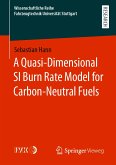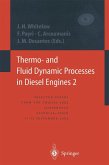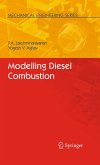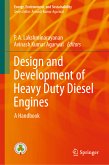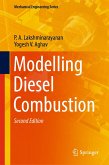Qirui Yang develops a model chain for the simulation of combustion and emissions of diesel engine with fully variable valve train (VVT) based on extensive 3D-CFD simulations, and experimental measurements on the engine test bench. The focus of the work is the development of a quasi-dimensional (QDM) flow model, which sets up a series of sub-models to describe phenomenologically the swirl, squish and axial charge motions as well as the shear-related turbulence production and dissipation. The QDM flow model is coupled with a QDM combustion model and a nitrogen oxides (NOx) / soot emission model. With the established model chain, VVT operating strategies of diesel engine can be developed and optimized as part of the simulation for specific engine performance parameters and the lowest NOx and soot emissions.
Target Groups
Contents
- Fundamentals and state of the art
- Quasi-dimensional charge motion and turbulence model
- Coupling with a combustion model and an emission model
Target Groups
- Researchers and students of mechanical engineering, especially automotive powertrains
- Research and development engineers in the fields of virtual engine development
The Author
Qirui Yang did his PhD project in the field of 0D/1D simulation of automotive powertrain at the Institute of Automotive Engineering (IFS) at University of Stuttgart. He works as a research engineer for simulation, project management and software development at the Research Institute FKFS in the field of Simulation and Artificial Intelligence of the Automotive Powertrain department.
Dieser Download kann aus rechtlichen Gründen nur mit Rechnungsadresse in A, B, BG, CY, CZ, D, DK, EW, E, FIN, F, GR, HR, H, IRL, I, LT, L, LR, M, NL, PL, P, R, S, SLO, SK ausgeliefert werden.
Es gelten unsere Allgemeinen Geschäftsbedingungen: www.buecher.de/agb
Impressum
www.buecher.de ist ein Internetauftritt der buecher.de internetstores GmbH
Geschäftsführung: Monica Sawhney | Roland Kölbl | Günter Hilger
Sitz der Gesellschaft: Batheyer Straße 115 - 117, 58099 Hagen
Postanschrift: Bürgermeister-Wegele-Str. 12, 86167 Augsburg
Amtsgericht Hagen HRB 13257
Steuernummer: 321/5800/1497
USt-IdNr: DE450055826
Bitte wählen Sie Ihr Anliegen aus.
Rechnungen
Retourenschein anfordern
Bestellstatus
Storno



